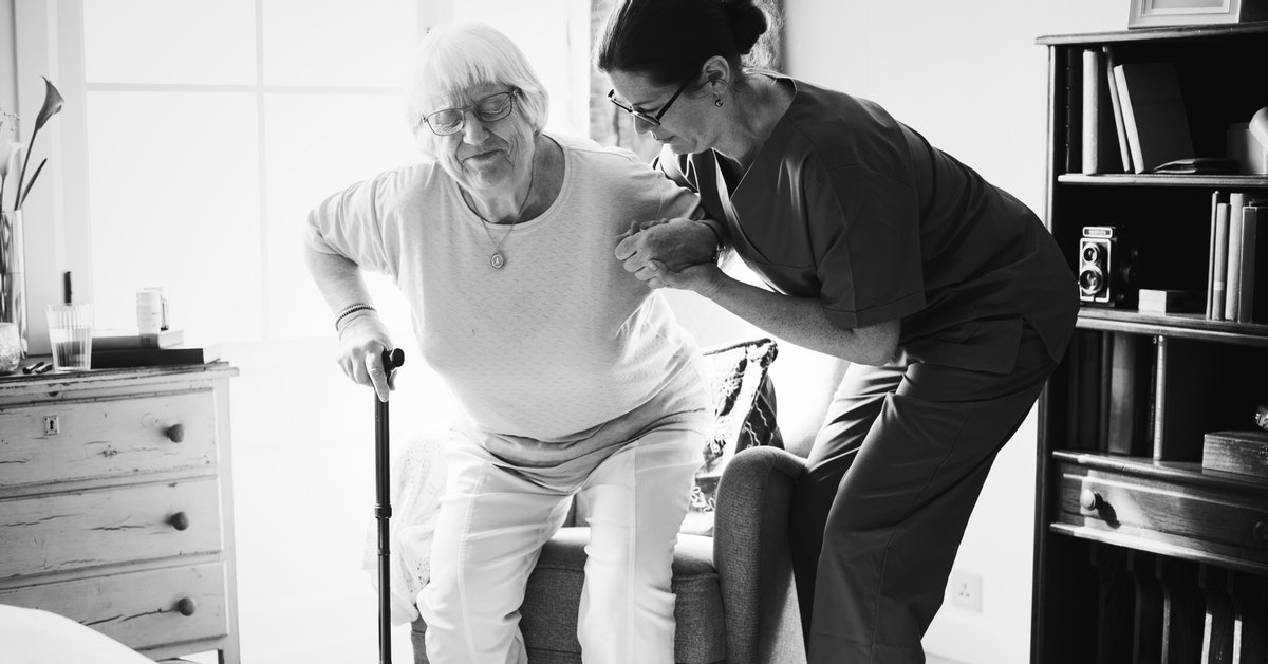
Back pain is one of the most common problems experienced by older adults. Given the impact this type of pain can have on your life, there are several strategies for managing it. Core and lower back exercises are particularly helpful in pain prevention and management.
Back pain in older adults
Back pain is a very common problem. Experts say that 80 percent of people will experience back pain at some point in their lives.
According to a November 2014 study published in the journal Neuromodulation: Technology at the Neural Interface, low back pain can occur in people of all ages, from children to the elderly. However, it is a problem that we are increasingly likely to experience as we age.
Low back pain has the potential to affect many different aspects of life. Because it can last for weeks or months, back pain usually influences mobility and mental health. It can even affect the ability to work or have a social life. The best thing about these simple exercises is that they can work for anyone who needs lower back pain relief; You don't have to be old to do them.
The great benefits of doing core exercises when we are older are:
- Improves posture and reduces back pain. Whether you're active or sitting, your core muscles are in charge of keeping you upright. When these muscles are weak, we tend to slouch, causing back pain and discomfort. Improving core strength through core exercises will keep your trunk upright and slouching to a minimum, relieving back pain over time.
- Help with daily activities. Strong abdominal muscles facilitate daily activities that many of us take for granted, like going up and down stairs, bending over to tie our shoes, and getting out of bed in the morning. If you like sports, core strength will help you swing a golf club, run 5K and swim more easily.
- Improves balance and coordination. Many of the core abdominal muscles work to keep us stable while sitting, standing, and walking. When these muscles are strong and healthy, they are better able to do this important job, allowing us to maintain balance and coordination without giving it much thought.

Core exercises for seniors
As you age, the back and abdominal muscles in your body can become weak. This can trigger or worsen low back pain.
Fortunately, this can be corrected by stretching and strengthening these regions. Both Harvard Health Publishing and a January 2016 publication in JAMA Internal Medicine say that exercise can help control and prevent future episodes of low back pain. Good exercise routines generally focus on the back, buttocks, and abdominal muscles.
However, it must be remembered that each person's low back pain is different. This means that the back extensor exercises recommended for older adults with arthritis may not be appropriate for older people who have back pain caused by a spinal problem. Check with your doctor or physical therapist before starting a new core exercise routine.
Bimini
Front planks are one of the best-known exercises for strengthening your core.
- Lie down on a mat so that your forearms are on the mat and your elbows are under your shoulders. The legs should be pressed together so that your body is a straight line.
- Raise your body so that your forearms and feet support your weight.
- Hold the position for 60 seconds, rest, and repeat two to three times.
- Don't let your back sag or arch while doing this exercise, make sure your hips and back stay straight.
You can also do bent-knee planks for a slightly easier variation of this exercise.
Side plate
You can also try another variation of the plank, called a side plank (with knees flat).
- Lie down on a mat so that you are on one side. Make sure your lower forearm is resting on the mat. Your arm should be at a 90 degree angle so that your elbow is below your shoulder.
- Rest your upper leg on your lower leg, straightening your knees and hips.
- Raise your body by stretching your waist. Your whole body should be rigid.
- Hold the position for 30 to 60 seconds.
- Turn to the other side and repeat. Each side should be done two to three times.
Scissors
The lying scissors kick is more active than the plank.
- Lie on your back so that your body forms a straight line. Place your hands on the sides of your hips.
- With both legs straight, lift one leg up. As you start to lower it, simultaneously lift the other leg. Your legs should move at the same time, so that one leg is raised while the other is lowered.
- Continue switching between the left and right legs.
- Make sure that the lower back does not come off the ground.
seated twists
- Sit on a Fitball and place your feet firmly on the floor in front of you.
- Put your arms across your chest and lean back as far as you can.
- While contracting your core muscles, rotate your torso to the left.
- Return to the starting position and turn to the right.
- Complete three sets of 15 reps each (or as many as you can).
Seated Knee Raise
- Sit on a mat or, if that's difficult, on a bench.
- Moving slowly and purposefully, bring both knees up toward your chest until your legs touch your abs.
- Go back to the starting position.
- Work your way up to three sets of 15 repetitions.
Kneeling Leg Raise
- Get on your knees, making sure your weight is distributed evenly on both points.
- Squeeze your core and extend your right leg back so it's slightly off the ground.
- While keeping your leg straight, raise it as high as you can without arching your back or feeling pain.
- Lower your leg back to the starting position.
- Repeat in the other side. Perform three sets of 10 repetitions.
Glute bridge
- Begin by lying on your back with your knees bent and your feet flat on the floor, hip-width apart.
- Push your lower back toward the floor and contract your abdominal muscles.
- On an exhale, lift your hips off the ground until they form a diagonal line from your knees to your ribcage.
- Do not overextend your hips, as this could damage your lower back.
- Press your heels into the ground to stay stable.
- Inhale and return to the starting position.
- Repeat for a total of 10 repetitions.